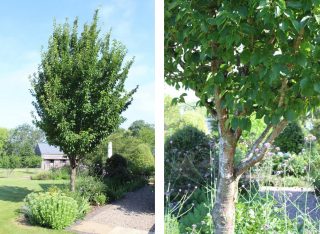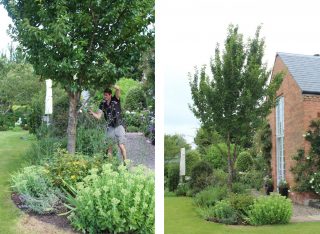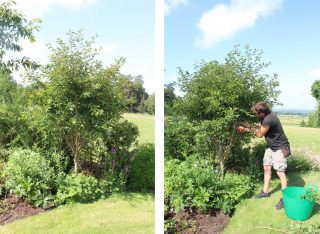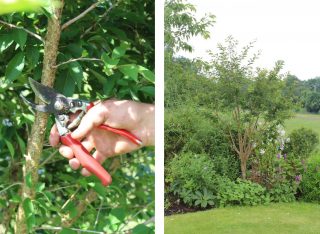Shaping Japanese Cherries
It is generally recommended not to prune Japanese Cherries other than removing dead or diseased wood. However, we find that they benefit from lightening and lifting the crown to increase air circulation through the canopy which helps preventing diseases. There is also an aesthetic element as, in a small tree, slightly transparent crowns look more attractive than congested ones.
Japanese Cherries, like all stone fruit, should not be pruned in the winter, but in the summer instead. This reduces the risk of a fungal disease, silver leaf, which these trees are prone to.
Prunus ‘Snow Goose’ is a tall, columnar tree. However, as it matures, it can become slightly too wide, especially in a position close to the house. It may become necessary to remove individual branches.


Two years ago, we planted a young Prunus ‘The Bride’ which has a more compact habit. The tree had grown so well that it had become quite congested already. It was time to lighten the crown and expose the branch framework. The process where the crown of the tree is made more transparent by removing wispy branches is called ‘inside-out pruning’. This technique is used to create transparency in Japanese acers as well.


